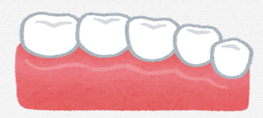- Cardiac electrophysiologic study (EPS) is the best way for the cardiologist to evaluate the mechanism of your arrhythmia.
- After confirming the mechanism via EPS, the arrhythmia focus can be detected and ablated by the catheter. It obviates the open-heart surgery and the need for long-term medical control.
- The procedures are done under local anesthesia, and you are conscious during the process.
Cardiac electrophysiologic study (EPS) is the best way for the cardiologist to evaluate the mechanism of your arrhythmia. It records the electrical conduction of the heart and induces an episode of arrhythmia, if needed, clarifying the mechanism of the arrhythmia and guide the treatment of arrhythmia.
Radiofrequency catheter ablation (RFCA) is an effective treatment for cardiac arrhythmia. After confirming the mechanism via EPS, the arrhythmia focus can be detected and ablated by the catheter. It obviates the open-heart surgery and the need for long-term medical control.
- It is the treatment of choice for paroxysmal supraventricular beats
- Patients with atrial fibrillation or ventricular tachycardia who are ineffective or unable receiving side effects of drugs
- Preparations
|
The doctor will explain the details of the procedure, possible risk, success rate and you will be asked to complete a consent form. |
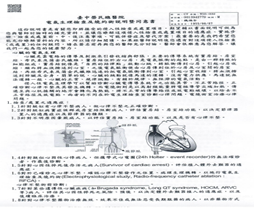 |
|
Chest X-ray, electrocardiogram(ECG), give a shot for collecting blood sampling, intravenous line, urine sample. |
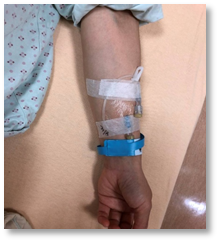 |
|
The staff will make a mark over dorsalis pedis artery for assessment of adequate perfusion. |
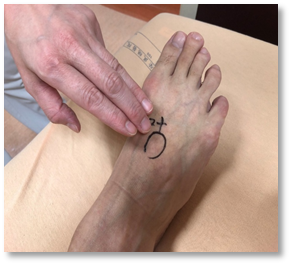 |
|
Discontinue anti-arrhythmic drugs according to doctor’s instruction. |
 |
|
If the procedure is in the morning, you should be fasting since midnight; if the procedure is in the afternoon, you should be fasting after breakfast. |
 |
|
Before the procedure, you should take off your underwear; remove your glasses, removable dentures, accessories, and watches. |
|
|
During the procedure, family members or relatives must accompany to wait outside the cardiac catheterization room. |
 |
In cardiac catheterization room, doctors will place three catheters through your vessels after sterilizing and applying local anesthesia medication. In normal situation, we’ll choose right femoral artery, right femoral vein, left femoral vein, and right internal jugular vein for placing catheters. Finally, the tips of catheters will be sent into heart chambers for recording the electrical signals of the heart. Focus of arrhythmia will be mapped and detected during EPS. Then, the lesion which causes the arrhythmia will be ablated. After that, doctors might give some attempts to induce the arrhythmia for confirming that the culprit arrhythmia could not be induced anymore after RFCA. The procedures are done under local anesthesia, and you are conscious during the process.
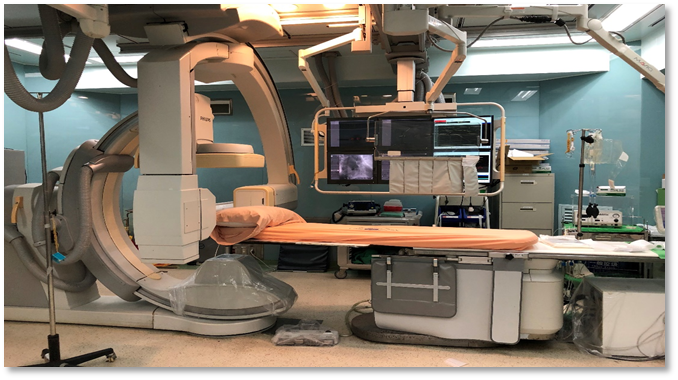
- The nurse will monitor your heart rhythm, and closely observe the changes in pulse, respiration and blood pressure, measuring four times every 15 minutes, four times every 30 minutes, and twice every 1 hour.
- If you do not choose self-paid hemostatic cotton or vascular stapler, you must lie on your back for 6 hours, and use a 2 kg sand bag to pressurize the compress site. When lying flat, it is forbidden to flex the knee and hip joints, but the puncture side can be moved.
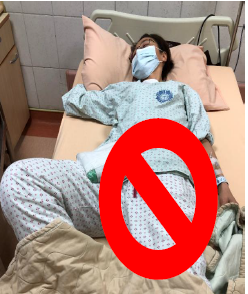 Do not do knee and hip flexion when lying down.
Do not do knee and hip flexion when lying down. - If you are a high risk of bleeding tendency, continuous bleeding or local bleeding after removal of the catheter (heat at the puncture site, wet and sticky feeling) etc., the doctor will extend the manual pressure for 15–30 minutes, and extend the pressure time until the puncture No bleeding at the site.
- If there is a wound suture, the doctor will consider the individual situation and inform the sand bag compression time, you can get off the bed earlier, and then gradually get off the bed.
- For 24 hours, do not get out of bed to take a shower (but you can take a bath in bed) and vigorous exercise, such as running or squatting up.
 take a bath
take a bath running
running - If you experience coldness, numbness, or tingling in the limbs, please immediately notify the staff.
- If you have no water restrictions, drinking more water to eliminate the contrast from the body.
- Please come back to cardiac EPS outpatient clinic for follow-up visits on scheduled date.
- Be aware of symptoms like palpitations, dyspnea or chest pain, which might be caused by recurrent arrhythmia or delayed complication. If it developed, please don’t hesitate to come back to our emergency department and evaluation.
- You may resume usual daily activity one week after discharged from hospital.
- Please remove the dressing over puncture site one day after discharged, if the puncture site is still bleeding; please come back to the emergency room immediately.
- If you still have any question, please don’t hesitate to call (04)23592525-6055 for consultation.
VI. Conclusion
The clinical manifestations of arrhythmia vary greatly, ranging from mild chest discomfort palpitations, dizziness, shock, and sudden death. In the treatment, abnormal heartbeat rhythm can be detected through electrophysiological study, and radiofrequency catheter ablation can be performed to block and destroy the abnormal heart conduction path.
VII. Reference
- 李和惠、方妙君(2021).心臟血管系統疾病病人之護理.胡月娟總校閱,內外科護理學(第六版,416-418).華杏。
- 鄭成泉(2022年4月19日).心臟電氣生理學檢查簡介/心導管燒灼術,中華民國心律醫學會編輯。https://thrs.org.tw/DB/Information/file/8/1.pdf.
- Parameswaran, R., Al-Kaisey, A. M., & Kalman, J. M. (2021). Catheter ablation for atrial fibrillation: Current indications and evolving technologies. Nature reviews. Cardiology, 18(3), 210–225. https://doi.org/10.1038/s41569-020-00451-x
- 位置
-
- 資料夾名稱
- English
- 上傳者
- 王勝昌
- 單位
- 中榮護理衛教
- 英文名稱
- Cardiac Electrophysiologic Study(EPS) and Radiofrequency Catheter Ablation(RFCA)
- 分類
- 治療
- 科別
- 心臟內科
- 癌症照護
- 否
- 建立
- 2024-02-24 09:53:46
- 制訂日期
- 2015-11-16
- 最近修訂
- 2024-03-19 11:52:00

